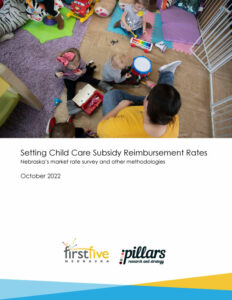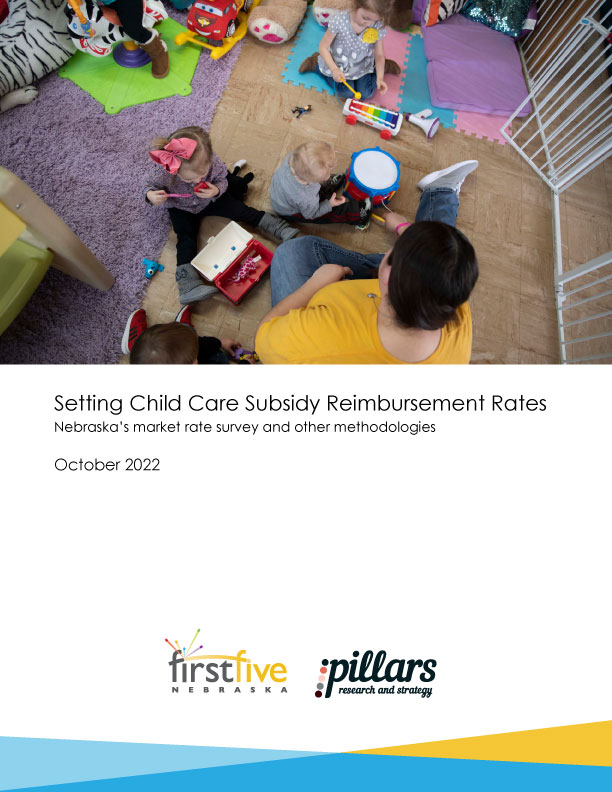 Nebraska’s child care subsidy is a key support for families of low income. It enables parents to pursue education or employment and better ensure the financial stability of their households. While the federal Child Care and Development Block Grant (CCDBG) funds subsidized child care, individual states make their own decisions about how they actually administer the subsidy. This includes setting the reimbursement rates for early childhood providers serving families who qualify for child care assistance.
Nebraska’s child care subsidy is a key support for families of low income. It enables parents to pursue education or employment and better ensure the financial stability of their households. While the federal Child Care and Development Block Grant (CCDBG) funds subsidized child care, individual states make their own decisions about how they actually administer the subsidy. This includes setting the reimbursement rates for early childhood providers serving families who qualify for child care assistance.
Like many states, Nebraska uses a market rate survey to determine how child care providers are compensated for serving children through the subsidy. In theory, those reimbursements should align with the expense of delivering services for each child in care. In practice, providers’ reimbursements can vary widely with changes in children’s attendance in the program as well the actual costs of care. Very often, this reimbursement method can threaten the revenues and stability of child care programs.
First Five Nebraska and Pillars Research and Strategy studied various methodologies that other states use to compensate providers who participate in the child care subsidy. Our report, Setting Child Care Subsidy Reimbursement Rates, provides an overview of multiple options available to Nebraska to better meet the needs of families and child care providers alike.



